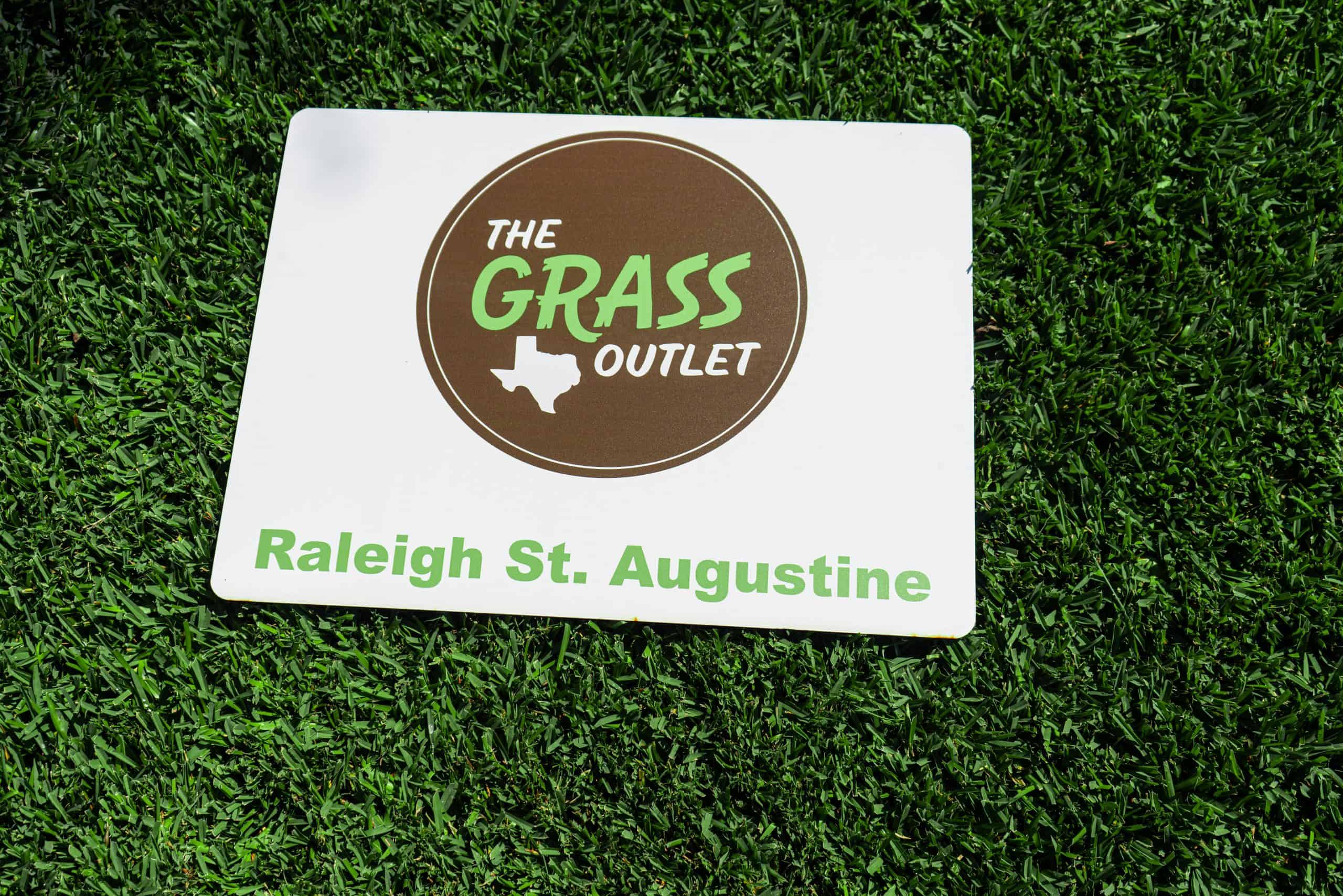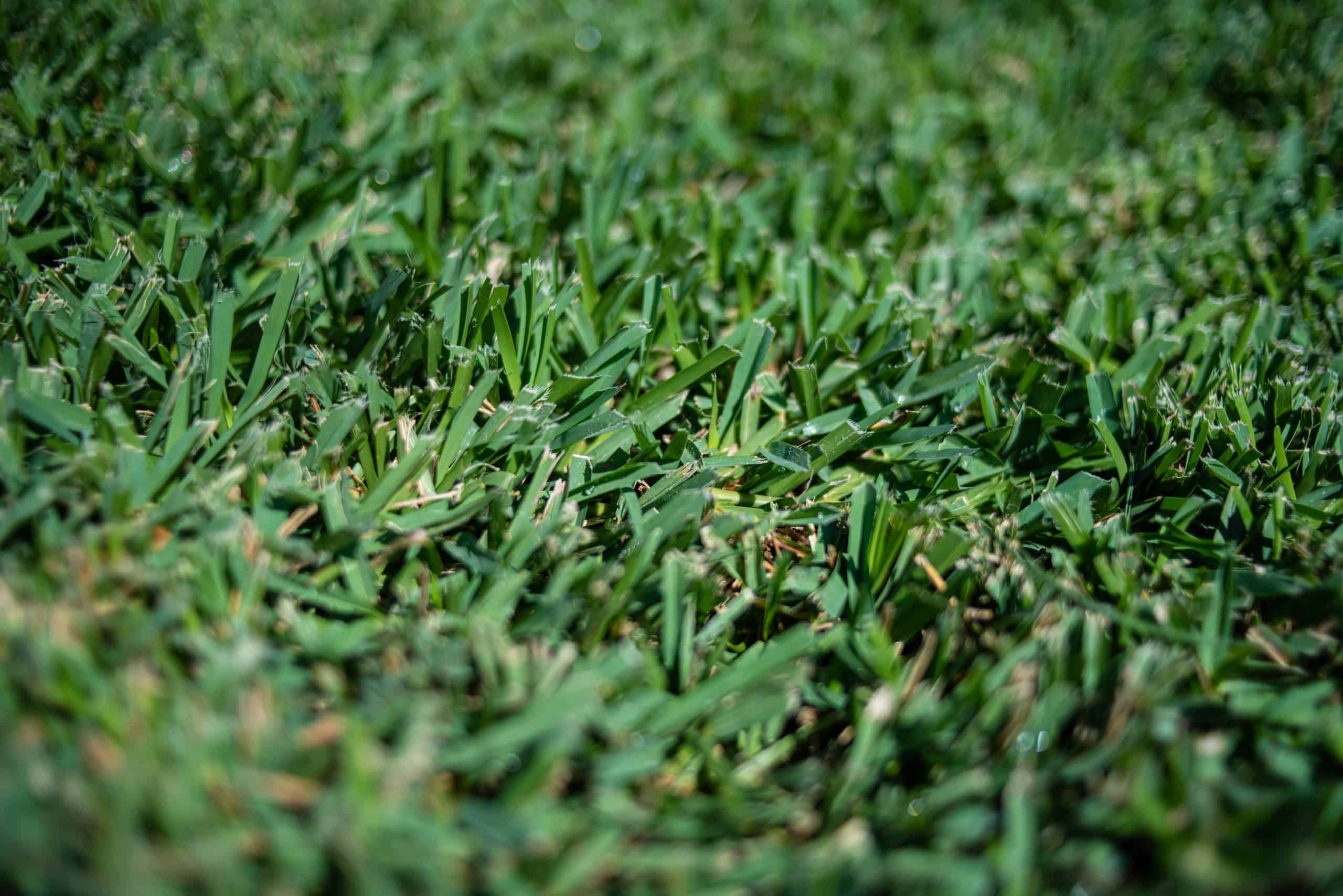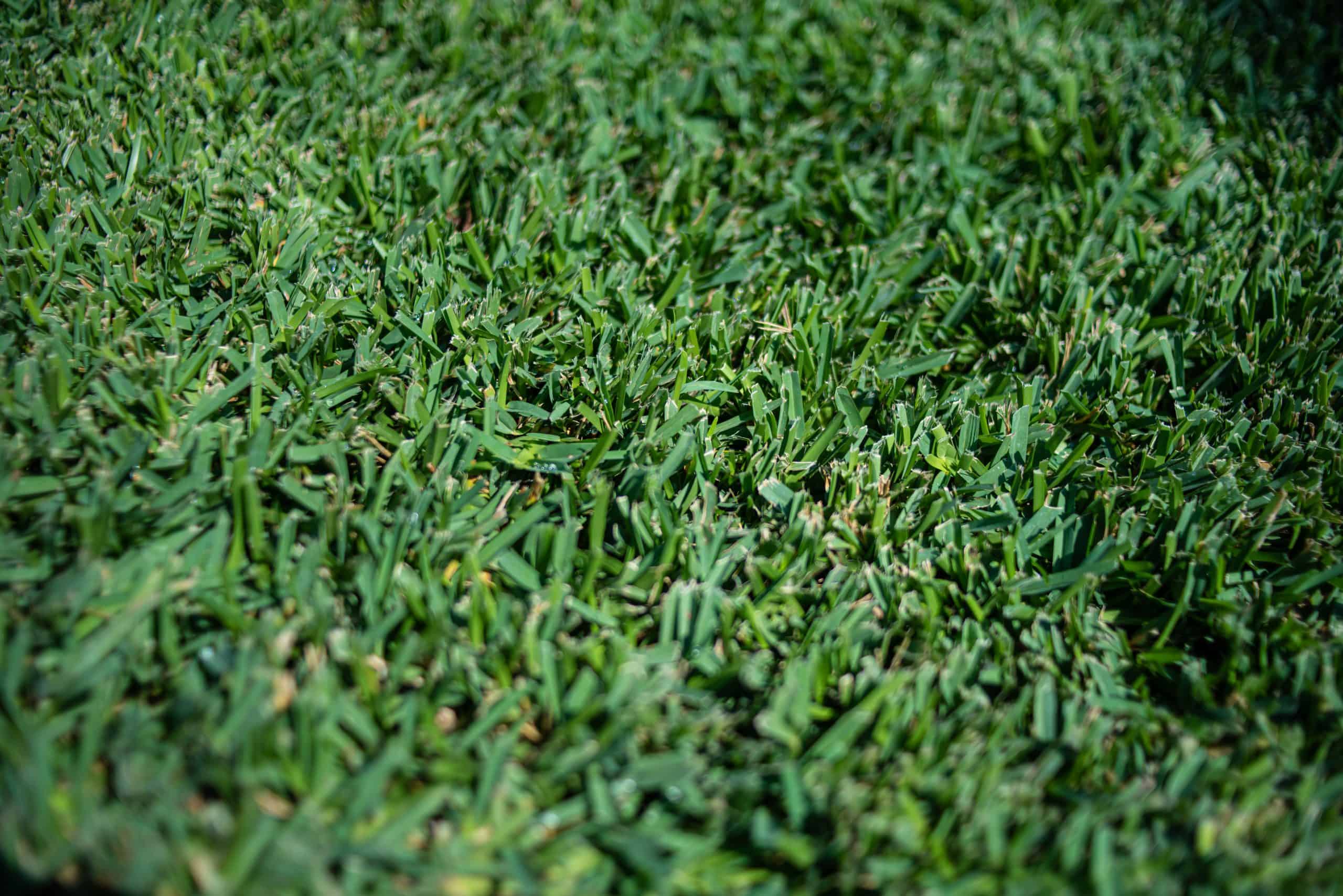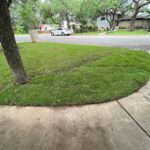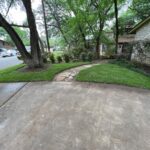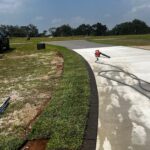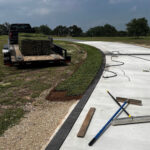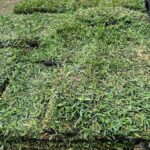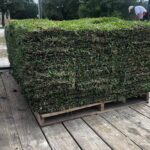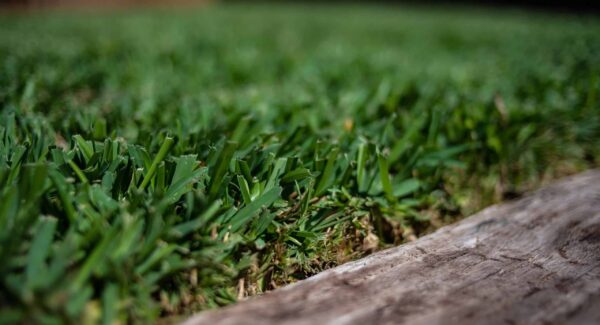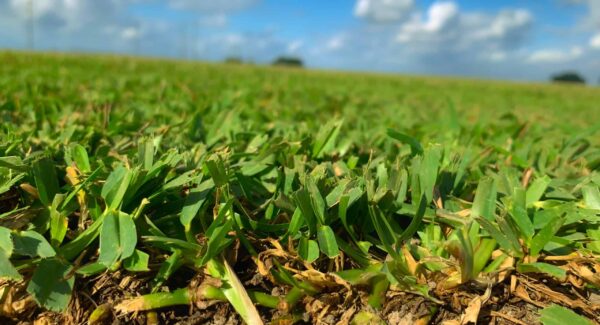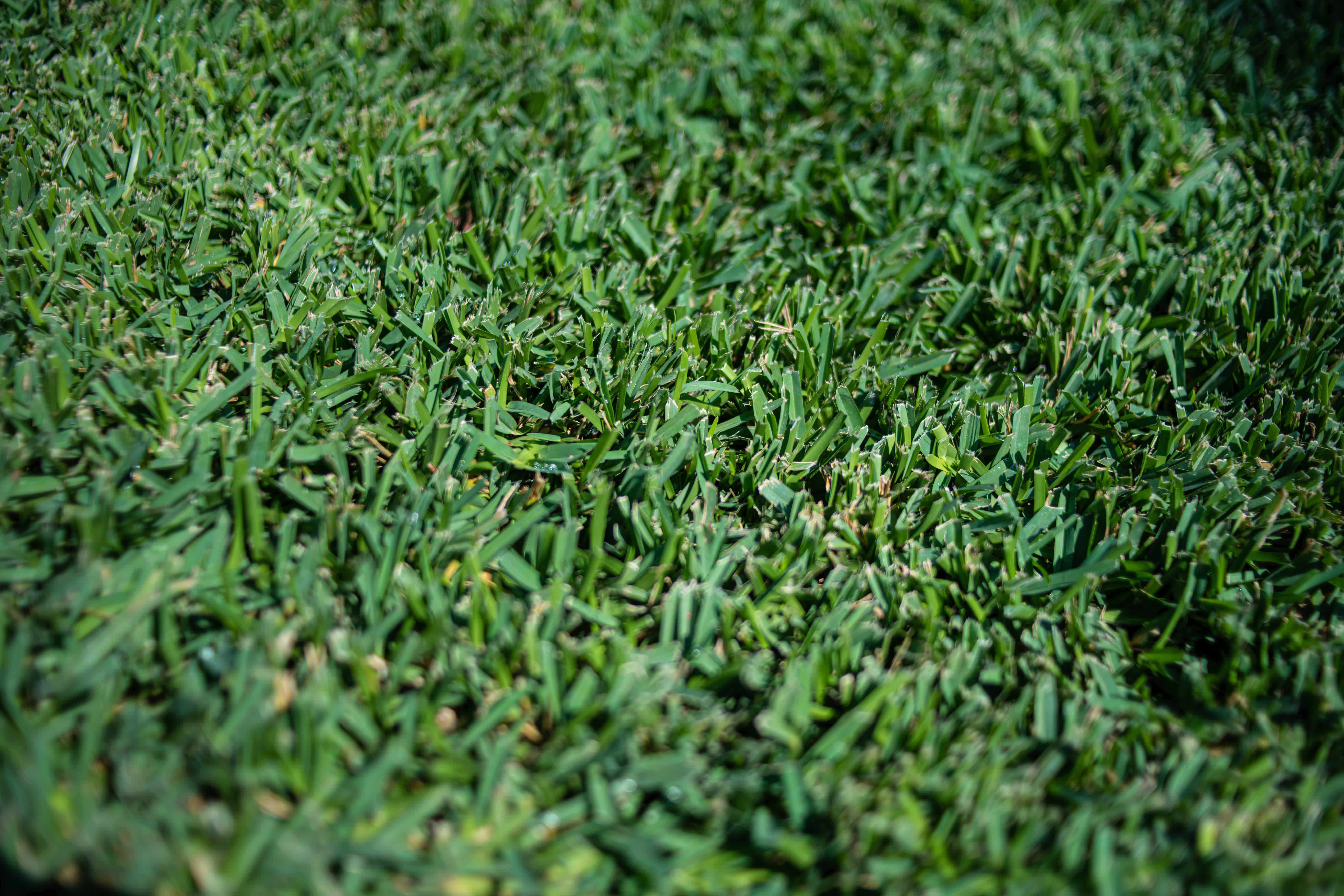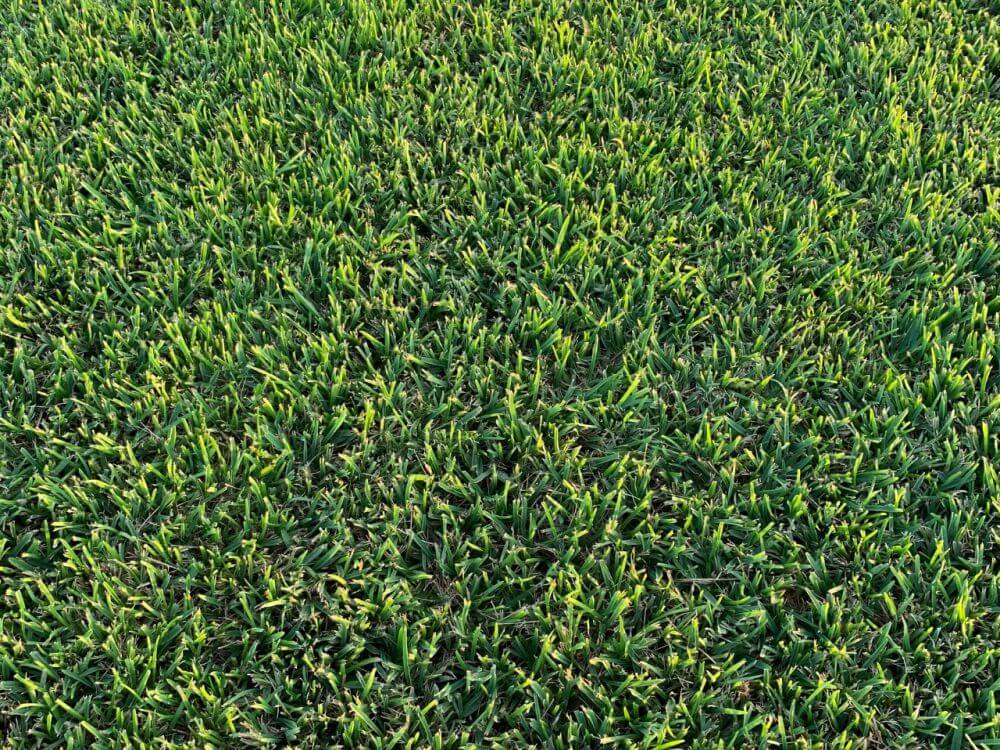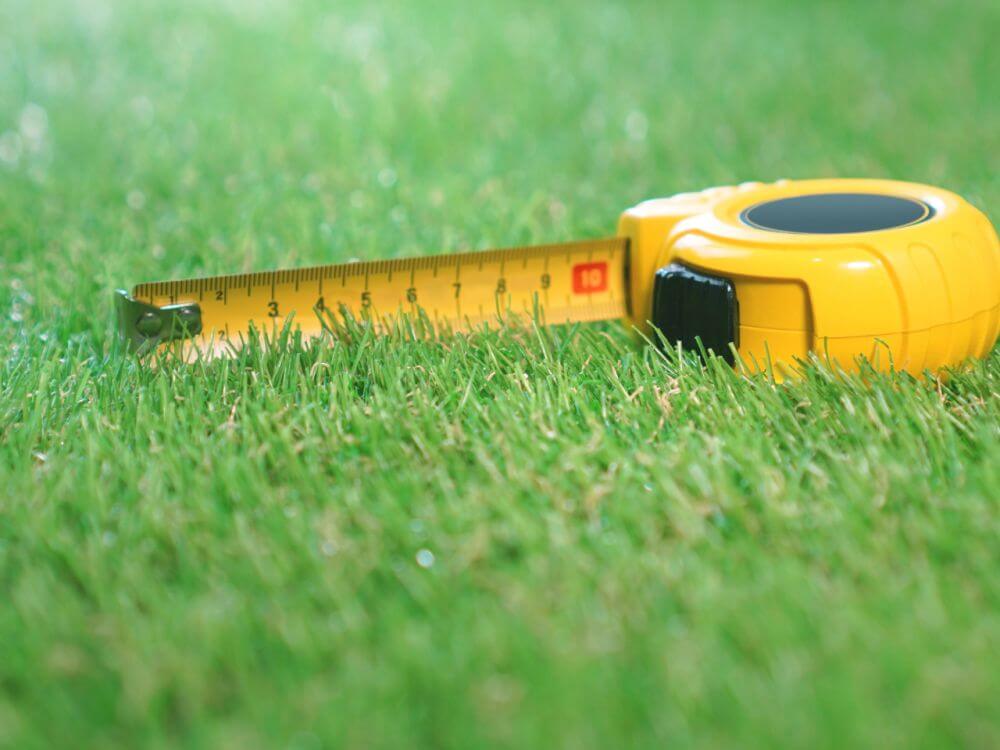First identified in North Carolina, Raleigh St. Augustine is a southern region grass noted for its cold hardiness and resistance to the St. Augustine Decline Virus. For decades, Raleigh has been the most widely distributed turfgrass in Texas, popular for its dense growth coverage and ability to choke out weeds when consistently watered and healthy. Raleigh does exhibit an ability for growth under tree canopies but must receive adequate sunlight to thrive.
Key Points
- Has been the standard St. Augustine for decades
- Most economical St. Augustine
- Growth Density and Texture: Fine texture with a narrower blade than other varieties. It develops a dense coverage on the ground, providing a lush appearance.
- Sunlight and Shade Tolerance: It requires a substantial amount of sunlight, requiring six to seven hours of direct sunlight daily. It can also tolerate indirect or filtered sunlight throughout the day. In moderate shade, it performs well, but under densely shaded conditions, it may develop thin, spindly turf.
- Drought Resistance: It exhibits drought tolerance to some extent. It survives with supplemental irrigation in drier climates, maintaining a satisfactory turf cover with only occasional mowing.
- Disease and Insect Resistance: Raleigh St. Augustine grass shows resistance to SAD (St. Augustine Decline) virus and fall armyworms.
- Mowing Requirements: It is advisable to mow Raleigh St. Augustine grass about once a week, ideally every seven days, to avoid stressing the grass by cutting off too many grass leaves at once. The recommended mowing height is between 2 and 3 inches.
- pH Preferences: This grass grows satisfactorily in a pH range from 5.0 to 8.5, although it may develop a chlorotic appearance in highly alkaline soils (above pH 7.5).
- Weed Resistance: Raleigh St. Augustine grass effectively competes with weeds and other grasses, thus offering good weed resistance. Still, pre-emergent herbicides are recommended.
- Fertilization Requirements: A balanced fertilization regimen with about two to three fertilizations per year, usually during fall or spring and somewhere between, is recommended to maintain a healthy lawn.
- Recommended Applications: 1. lawns, both in commercial and residential settings, due to its ability to create a dense, lush turf under moderate maintenance. 2. It is not well-suited for areas with high traffic as it doesn't tolerate traffic and some other warm-season species.

